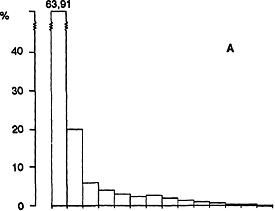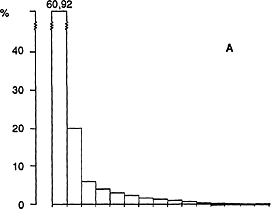The revaccination of schoolchildren can restore the residual allergy induced by vaccination in the first years of life but can not modify the allergy resulting from a natural infection. So revaccination in this population should indicate the group infected by the Koch bacilli. To assess the applicability of these assumptions in estimating the risk of tuberculosis infection in regions with high BCG coverage a study was undertaken on schoolchildren between 6 and 9 years of age who were attending the municipal schools in the east zone of S. Paulo City, in the course of the first semester of 1988. Of 11,455 who were vaccinated only 7,470 were tested with PPD, revaccinated and retested ten weeks later; 3,314 of these were vaccinated in the first trimester of life with a half dose and 4,156 received a full dose at later ages (75% during the first year, 20% during the second and 5% during the third). In comparing the results pre and post vaccination by correlation table, the calculation of infection was made according to the criteria of the original method and to the modifications made by the authors under separate cover for those vaccinated in the first trimester and those vaccinated later. The risk of infection was 0.35% and 0.37%, respectively, for the original model and 0.45% and 0.49% for the modified model. The referencial was 0.55%. The difference between model and age or with the referencial was not significant (p > 0.005). Data suggest that the method is applicable to estimate the risk of tuberculosis infection in schoolchildren vaccinated with a full dose of BCG during the first year of life.
Tuberculosis; BCG vaccine; Population surveillance












